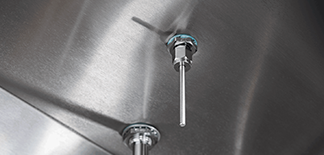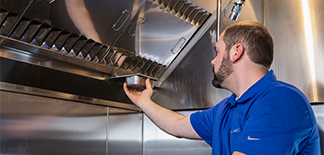Contrary to popular belief, product choices do exist that enable us to achieve different levels of flexibility in our kitchen ventilation systems.
As the title of this article spells out, I am going to write about flexible kitchen ventilation. Flexible what? Yes, I used the word flexible and kitchen together—something most of us our accustomed to in the foodservice industry. Product choices do exist enable us to achieve different levels of flexibility in our kitchen ventilation systems.
Equipment Changes
Many drivers of change exist in a foodservice establishment. The changes may occur prior to start- up but after ventilation equipment has been ordered, during the life of a particular restaurant, or after a facilities first life (which we know can vary from a few months to several years). Increased competition in the restaurant industry in particular is driving more frequent menu changes than in years past. Changing the menu, focus, employees or target market of an establishment may have far reaching affects. For example, how many of the following changes have you witnessed?
- Changes in appliance type before any ventilation equipment is installed but after it has been ordered.
- The hiring of a new chef demands that the cooking appliance order be changed.
- A menu change requires a different equipment line up than previously installed.
- The clientele consumes more of a certain product and to maintain acceptable service; one piece of equipment is changed out with a duplicate of another.
The list could go on, but the fact of the matter is, change happens.
How can change be managed more efficiently and effectively in the kitchen? When a change in the cooking battery occurs the two things most affected are the fire protection system and the utility connections for the appliances.
A Different Approach to Fire Protection
Today the most commonly used fire suppression systems provide appliance specific protection. That means that a fryer and a griddle each have a unique protection solution with a specific nozzle specifically located to protect each of the appliances. If the two appliances are rearranged or the type of appliance is changed, that protection is no longer valid. This type of protection requires a certified installer to come to the facility and modify the system which may cost anywhere from a few hundred dollars to thousands depending on the change. The alternative is to use what is commonly referred to as overlapping or full-flood protection. Overlapping protection provides protection across the entire length of the hood regardless of equipment type (see Figure 1) with few exceptions identified below. Two very reliable manufacturers of these systems are Amerex and Ansul.
Exceptions to this protection are upright broilers/ salamanders, cheese melters, and wide shelves*. However, that doesn’t mean you can’t use overlapping protection. Appliance specific protection occurs at the salamander but overlapping protection continues before and after it such that the appliances can be rearranged or changed out in the other areas of the hood. This overlapping or full- flood solution saves the time and expense of coordinating changes and modifying the system.
Flexible Utility Connections
In any kitchen we need to supply utilities to our varying cooking batteries whether it is electric, gas, steam or water. Typically a wall is built and lines are run to provide these utilities at each appliance which requires the coordination of several trades to get the wall built and finished off.
This type of installation requires the coordination of several trades to get the wall built and completed. With the first equipment change, many of these trades are again needed to move a gas connection or run new wires, refinish the wall, etc. A better option is a utility distribution system, manufactured by a variety of industry leaders. A utility distribution system manufactured is a pre-engineered, pre-wired, pre-piped system that can save time and money.
These systems distribute all the needed utilities to the appliances and in most cases only require the electrician to hook up a main power line and the plumber to connect gas and/or water, which save a lot of time in field. Typically constructed out of stainless steel, a utility distribution system provides smooth surfaces that are easy to clean.
Some manufacturers have gas and water lines with standard drop locations—for example, gas drops every 12” which almost guarantees you’ll have a drop where you need it without modification. Electrical panels are easy to access, which makes changing out breakers or outlets easy. Another added benefit to utility distribution systems is that they are considered pieces of equipment and depreciate in seven years instead of 32 years for a standard wall which is considered a lease hold improvement, thus providing tax benefits. Furthermore, if moving operations to another location the utility distribution system can be moved as well. A standard system may not be much more expensive if at all than building a utility wall, and is likely to save a lot of time and money in the future when changes occur. Some people will try to manufacture their own “field built” utility distribution systems which not only take up a lot of time but have to be tested as well.
Battling Upfront Costs
Although a small increase in upfront cost may exist by designing for flexibility, most of the cost is often offset by the time savings on installation and coordination conflicts. Furthermore, any significant change will offset these costs. A small change in a kitchen can be costly.
Experience has led many to agree that in commercial kitchen ventilation systems, flexibility is valuable—you can pay for it now, or pay much more for it later.







